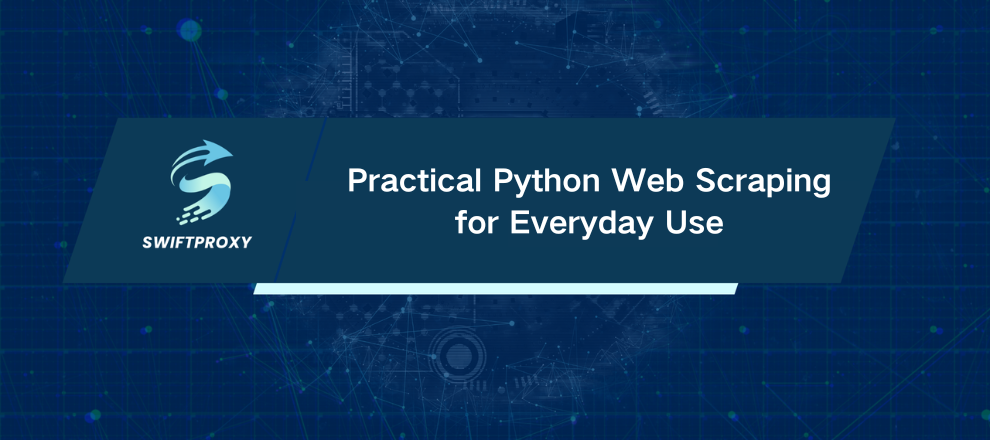Practical Python Web Scraping for Everyday Use

Web scraping can seem tricky at first. But once you crack the basics, it's a powerful skill that opens up endless possibilities. Python makes it easier than most languages, thanks to its clean syntax and rich ecosystem of libraries designed for scraping. If you're ready to grab data from websites like a pro, buckle up — this guide walks you through every essential step.
What You Need Before You Start
Make sure you have Python 3.4 or above installed. We recommend the latest stable release — currently Python 3.12 — but anything after 3.4 will work just fine.
Windows users: during installation, don't skip the "Add to PATH" option. This saves you headaches later by letting your system recognize Python and pip commands right out of the box. If you missed it, just rerun the installer and select "Modify" to add it.
The Power of Python Libraries
One reason Python shines in web scraping is its vast library ecosystem. These tools do the heavy lifting for you. Here are the top contenders:
Requests: Send HTTP requests with ease.
Beautiful Soup: Parse HTML and XML — your data's best friend.
lxml: Fast XML and HTML processing.
Selenium: Automate browsers for dynamic content.
Scrapy: A full-featured scraping framework for big projects.
Pick what suits your needs. For beginners, combining Requests with Beautiful Soup is a great starting point. Selenium comes in when JavaScript-heavy sites demand interaction.
Browsers and WebDrivers
Scrapers often mimic browsers to access sites. Beginners should start with a visible browser — like Chrome — to watch what's happening. It helps with troubleshooting and understanding how your script interacts with web pages. Later, you can switch to headless browsers for speed and efficiency. This tutorial uses Chrome's WebDriver, but Firefox works just as well.
Your Coding Workspace
Before diving into code, pick a solid environment. You can write scripts in any text editor, but an IDE boosts productivity. Visual Studio Code and PyCharm are top choices. PyCharm is especially newbie-friendly with its intuitive interface. If you're following along, create a new Python file in PyCharm and name it something like scraper.py.
Importing Libraries and Initializing
Get pandas and pyarrow installed for data export:
pip install pandas pyarrow
Here's a minimal start to your script:
import pandas as pd
from bs4 import BeautifulSoup
from selenium import webdriver
driver = webdriver.Chrome()
driver.get('https://sandbox.example.com/products')
results = []
content = driver.page_source
soup = BeautifulSoup(content, 'html.parser')
Ignore PyCharm's gray warnings about unused imports — they’ll come into play soon.
Picking the Right URL to Scrape
Choose a simple, static webpage. Avoid sites that load data exclusively with JavaScript unless you plan to handle those complexities with Selenium or similar tools. Also, respect the website's rules: check robots.txt and scrape only public data.
For example, we use scraping sandbox as our playground.
driver.get('https://sandbox.example.com/products')
Extracting Data
Time to pinpoint the data on the page. Open the website in your browser and inspect the HTML structure (Ctrl+Shift+I or right-click → Inspect). Look for class names or tags that hold your target data.
In our example, products are inside elements with the class product-card. Titles sit within <h4> tags.
Use this loop to collect product names:
for element in soup.find_all(attrs={'class': 'product-card'}):
name = element.find('h4')
if name and name.text not in results:
results.append(name.text)
Remember: find_all lets you filter by attributes. Classes are your easiest hook.
Exporting Your Data Like a Pro
Printing results is fine for testing. But you want your data saved. Here's how to export to CSV:
df = pd.DataFrame({'Names': results})
df.to_csv('products.csv', index=False, encoding='utf-8')
Want Excel? Just add:
pip install openpyxl
Then export:
df.to_excel('products.xlsx', index=False)
Pandas makes saving your data effortless.
Scraping Multiple Data Points
One data point rarely tells the whole story. Grab prices alongside product names to add context:
prices = []
for element in soup.find_all(attrs={'class': 'product-card'}):
price = element.find(attrs={'class': 'price-wrapper'})
if price:
prices.append(price.text)
Then combine:
df = pd.DataFrame({'Names': results, 'Prices': prices})
df.to_csv('products.csv', index=False, encoding='utf-8')
If the lists don't match lengths, pandas throws a fit. To fix:
series_names = pd.Series(results, name='Names')
series_prices = pd.Series(prices, name='Prices')
df = pd.DataFrame({ 'Names': series_names, 'Prices': series_prices })
df.to_csv('products.csv', index=False, encoding='utf-8')
This approach handles uneven data gracefully.
Wrapping Up
Now, you're equipped to build your own Python web scrapers. The process is a blend of detective work and coding finesse — inspecting HTML, choosing the right tools, and structuring your data. From here, you can explore deeper challenges like handling JavaScript, managing sessions, or scaling your scrapers.

















































